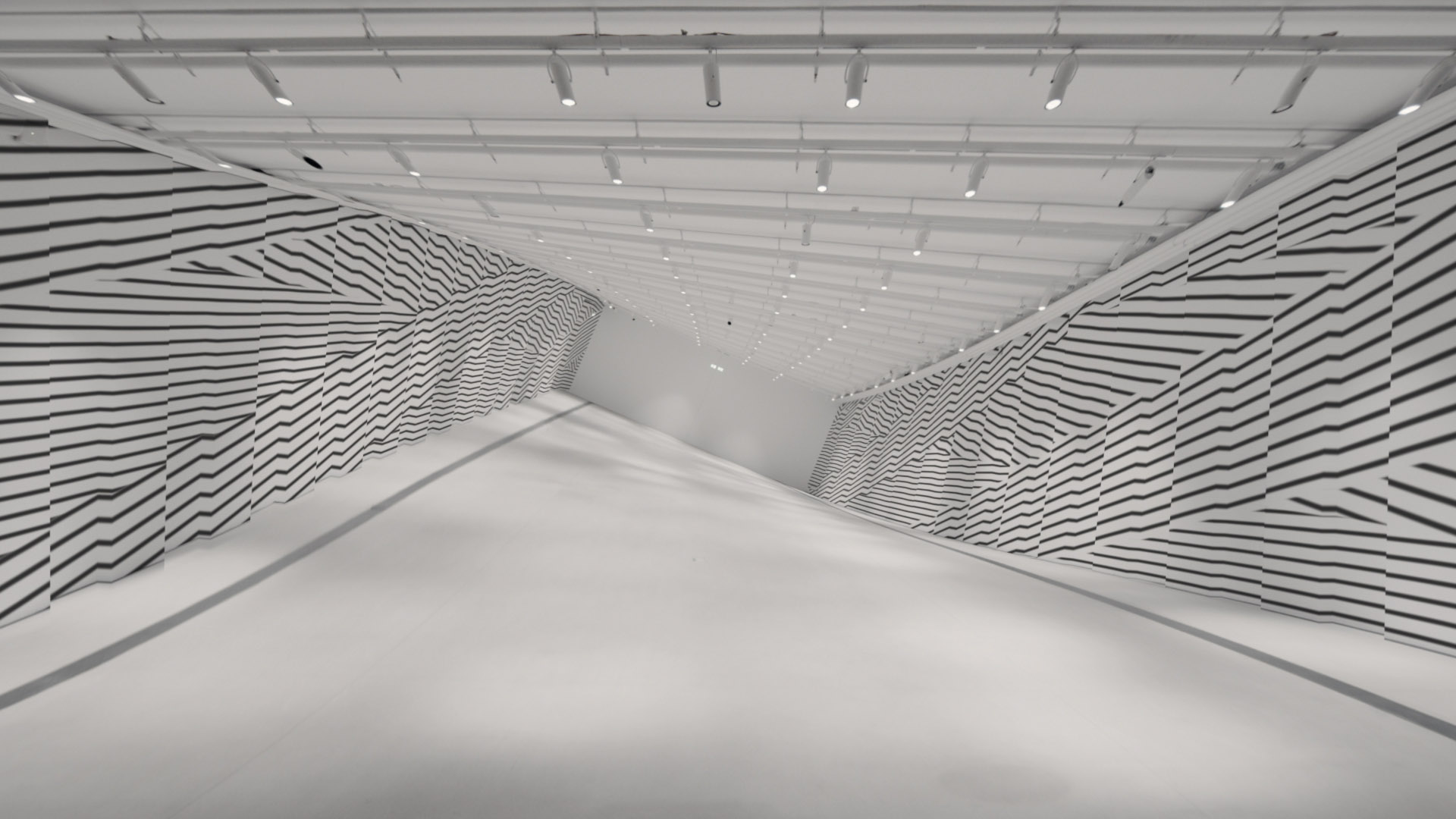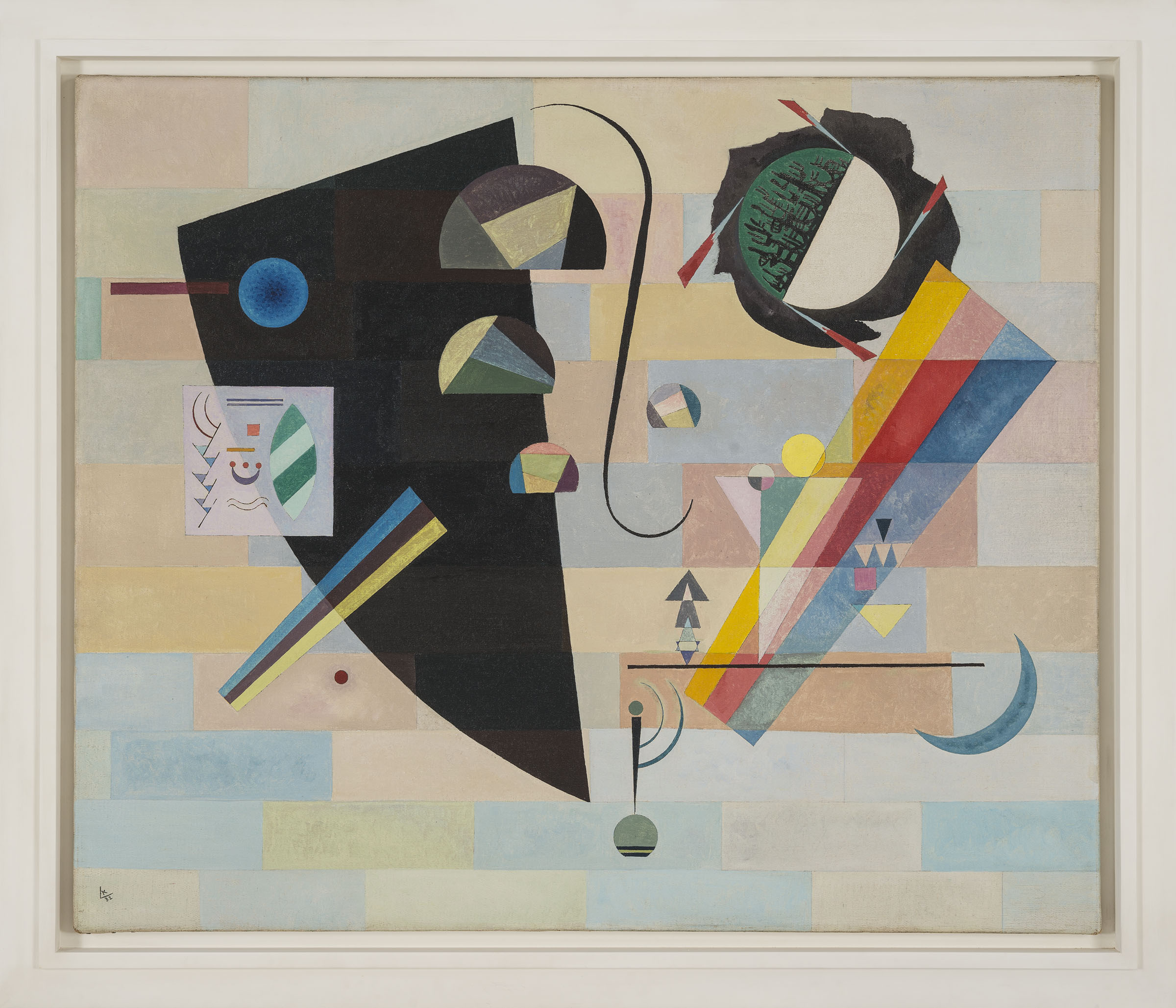Chapter 1. Non-objectivity as a new visual language
Tuning-2 brings together nine especially commissioned sound installations and an exhibition which traces the connections that have run between music and formal experiments in the visual arts from the beginning of the last century to the present day.
The first chapter of this exhibition is dedicated to abstract art and its close relation to the methods for constructing musical works that were developed in the twentieth century. Geometric forms, rhythms, and harmonies constructed new spaces and altered existing ones, and in doing so brought painting close to music.

The beginning of the twentieth century saw a breakthrough take place in art: struggling with the canons, artists turned away from realistic representations of the world around them, even from the linear perspective consistent with human perception that had been developed during the Proto-Renaissance (from the thirteenth to fourteenth century). Whether they represented scenes from visible reality or imagined idealised worlds, up until this point artists had founded their works on familiar objects and landscapes. Now, the creativity of a fundamentally new visual language prevailed: the artist constructed reality from nothing, populated it with unprecedented objects, and invented unusual scenarios for them.
This chapter of the exhibition begins with the historical avant-garde—David Burliuk (1882—1967), Wassily Kandinsky (1866–1944), Alexandra Exter (1882–1949). It continues on through the European experiments of the twentieth century—Bridget Riley (b. 1931), Gerhard Richter (b. 1932), Victor Vasarely (1906–1997), Sigmar Polke (1941–2010), Rosemary Trockel (b. 1952), Günter Förg (1952–2013), and Hans Hartung (1904–1989), before ending with contemporary readings of non-objectivity by Liz Deschenes (b. 1966) and Wade Guyton (b. 1966).
If Alexandra Exter’s early Cubist canvases represented a fragmented, faceted reality, her later works arrived at the triumph of pure geometric form, as in Construction of Planes According to the Movement of Colour (1918). This profound, creative experiment would ultimately result in the creation of new, previously non-existent forms in painting.
Wassily Kandinsky was one of the main pioneers and theorists of non-objective art. His artistic methods influenced the senses and the imagination, and were in many ways similar to music. In his 1910 treatise Concerning the Spiritual in Art, Kandinsky’s comparison of the laws of composition and colour harmony with musical notation saw colour and harmony take the place of notes. «Colour is the keyboard, ” he wrote, „the eye is the hammer, while the soul is a piano of many strings. The artist is the hand through which the medium of different keys causes the human soul to vibrate.“ A painting thus becomes the creation of a world. Kandinsky’s later painting, Krass und Mild (1932) is a triumph of pure abstract form, a confirmation of the principle dear to the artist according to which harmony in painting and music are of the same nature.

Wassily Kandinsky
(1866–1944)
Krass und Mild
(Dramatic and Mild), 1932
Oil on canvas
By the middle of the twentieth century, abstract art was approaching conventionality, with nothing left to prove or subvert. Once again, the time had come to redefine the essence and task of pictorial abstraction.
In his works, Victor Vasarely made use of the laws of optics to create illusions on canvas that convinced their viewers of their three dimensionality, notably in 8–4 (1973–1975). Drawing on Vasarely’s work, Bridget Riley attains an illusion of an entirely different nature in Stretch (1964). If the work of art had previously drawn the viewer into its orbit but itself remained unchanged, in Riley’s practice works are brought to life and altered when they come under the viewer’s gaze. The spectator becomes the artist’s co-author—it is in this way, Riley explains, that she shares her «particular joy, ” giving to each the ability „to feel themselves alive.“
The musical experiments of the twentieth century require a similar engagement from the public—so-called active listening. If not a co-author, the listener proves an important participant in the process, not least because this new music—and that of John Cage and other American minimalists in particular—is literally created anew each time it is performed.
In his abstract work, Wer hat noch nicht, wer will nochmal (1984), Sigmar Polke takes the halftone pattern—the small dots used to reproduce images on newspaper pages—to its limits. Halftone and pixelated graphics are frequently used techniques in art that critically reflects on problems of reality and its perception in a world ruled by mass media and that questions the role of communications technologies—of media and messengers, for example—as agents of social change.
If newspaper printing occupied an important place in Sigmar Polke’s painting, photography occupies a correspondingly important one in Gerhard Richter’s work. Contrary to the established conventions of non-objective art, his Abstraction 721–3 (1990) rejects the idea of the artistic canvas as a sacred space. Applied to the canvas in a surgically attentive imitation of chaos, layers of paint successively cancel one another out, and in doing so bury modernist abstract painting as behind them a photographic image emerges. Though he makes use of the techniques of oil painting, Richter all the while underlines the fact that today’s world is impossible to convey through classical artistic means, even when these are passed through the prism of the avant-garde.

Gerhard Richter
(b. 1932)
Abstraktes Bild 721–3 (Abstract Painting 721–3), 1990
Oil on canvas
In their experiments, contemporary artists free themselves from painting itself, albeit whilst continuing to pay tribute to it and partly mimicking it. Liz Deschenes’s Bracket 3, part of her 2013 series, is one such work: this gelatin silver print on aluminium recalls the canvas of a painting. A dark reflective surface with a metallic lustre hangs in the air, forming something intermediary between sculpture and photography. The painting borrows its name from bracketing, a method in photography whereby a series of images of the same subject are taken with a single variable changed—shutter speed, aperture, or focus.
Wade Guyton runs primed canvases through large-format printers which leave behind chaotically scattered marks that form into accidental variations and patterns. Post-painterly abstraction engenders itself here with the help of office technologies and without a single brushstroke. The painting no longer requires direct contact with its author, who becomes more akin to a conductor or operator in this new means of creation.

Wade Guyton
(b. 1972)
Untitled, 2007
Epson UltraChrome
inkjet on canvas
Over the course of the twentieth century, experiments with pure form and technology freed art from the need to imitate reality, even to bear any relation to it. Artists searched for consonances in musical experiments as they defined the role of the artist anew: where he had once been a creator and producer, he now became a researcher.